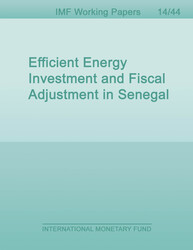
Efficient Energy Investment and Fiscal Adjustment in Senegal
Senegal's fiscal deficit and public debt have been on the rise in recent years owing partly to an ailing and inefficient oil-based energy sector. In this paper we use a two-sector, open-economy, dynamic general equilibrium model to investigate the effects of varying fiscal policy instruments one at a time and of policy packages that increase public investment in energy and infrastructure in scenarios with varying degrees of debt finance and with different types of supporting fiscal adjustment. Lowering the fiscal deficit by raising taxes and cutting government expenditure has adverse effects on growth, real wages and the supply of public services. Senegal does not need, however, to undertake such difficult fiscal adjustment. A public investment program that coordinates new investment in low-cost hydroelectric, coal or gas-fired power with a phased contraction of the oil-based sector raises the total supply of energy by 70 percent, increases real wages and real GDP, stimulates private investment, and significantly reduces the fiscal deficit in the medium long term. More aggressive investment programs borrow against future fiscal gains to combine new energy investments with either delayed or frontloaded investments in non-energy infrastructure. These programs lead to much higher real wages and real GDP while keeping public debt sustainable and the fiscal deficit low in the medium and long term.
Publication date: March 2014
ISBN: 9781475527728
$18.00
Add to Cart by clicking price of the language and format you'd like to purchase
Available Languages and Formats
| English |
Prices in red indicate formats that are not yet available but are forthcoming.
Topics covered in this book
This title contains information about the following subjects.
Click on a subject if you would like to see other titles with the same subjects.
Economics- Macroeconomics , Economics / General , International - Economics , Energy Reform , Public Investment , Growth , Debt Sustainability , Fiscal Policy , Infrastructure
Summary
Copyright © 2010 - 2024
Powered by:
AIDC



